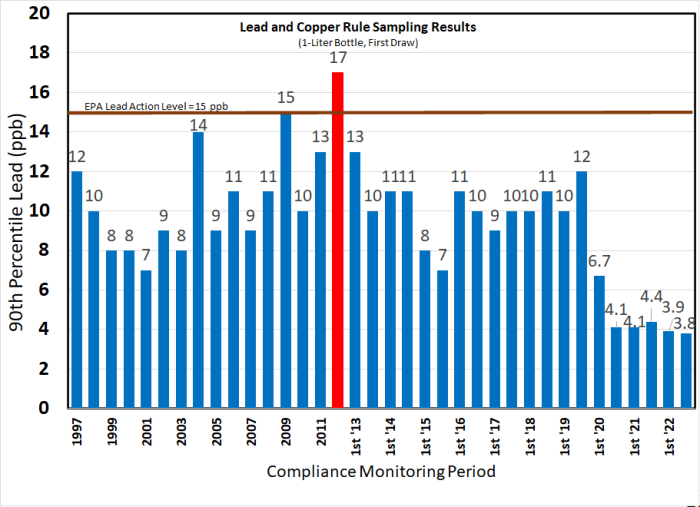Lead, a naturally occurring, silvery blue, soft and malleable metal, has been a part of human society for thousands of years.
The Romans used lead pipes to carry water to their cities. Powdered lead has been an ingredient in makeup since the time of the Egyptian queen Cleopatra.
Today, scientists and society are more aware than in the past of the dangers posed by the use of lead in paint, gasoline and drinking water infrastructure.
The material that once was commonplace in many manufactured goods has become the target of regulations aimed at reducing or eliminating its use.
The Consumer Product Safety Commission in September 1977 banned lead from the consumer paint market, a change that took effect in 1978. Amendments to the Clean Air Act in 1991 required lead be removed from gasoline by 1995.
In the water industry, concerns about lead pipes have evolved over decades. The Safe Drinking Water Act was originally passed by Congress in 1974 to protect public health by regulating the nation’s public drinking water supply. In 1991, EPA published a regulation under the Safe Drinking Water Act to control lead and copper in drinking water. This regulation is known as the Lead and Copper Rule.
In 2012, water quality sample results from homes with known lead service lines and plumbing exceeded the level the EPA requires for taking action. The action level is an indicator that additional steps may need to be taken to “optimize corrosion control treatment.” That means a utility may need to adjust its water treatment to minimize the risk of lead getting into drinking water from lead pipes and plumbing. Colorado Department of Public Health and Environment required Denver Water to begin adding orthophosphate, a food additive, to all drinking water in March 2020.
Denver Water proposed a holistic, alternative approach to orthophosphate that removes lead at its source. This alternative approach, the Lead Reduction Program, was approved by the EPA and CDPHE in December 2019.
What is the Lead and Copper Rule?
Under the Safe Drinking Water Act Lead and Copper Rule (LCR), the EPA requires public drinking water systems to test the tap water from homes within their distribution system that are likely to have high lead levels. These are usually homes with lead service lines or lead solder. The EPA rule requires that nine out of 10, or 90 percent, of the sampled homes must have lead levels below the action level of 15 parts per billion (ppb).
Homeowners who participate in this study collect a sample in accordance with EPA sample collection criteria and send it to Denver Water’s state-certified laboratory for testing. Study samples are held to a tight protocol and once analyzed may not be invalidated without justifiable cause and consensus with the Colorado Department of Public Health and Environment.

